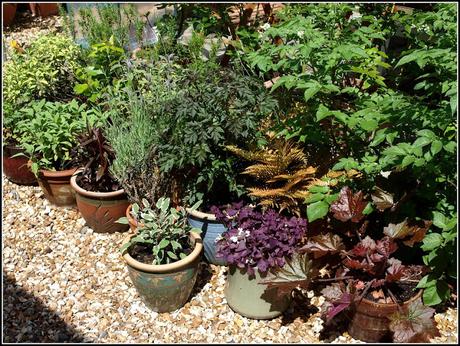
One of the best things about growing plants in pots is that you can choose different pots every time if you want. Selecting pots and containers can be a hobby in itself! For a food plant you probably want a plain, functional container, like the plastic ones I use for potatoes, chillis and tomatoes:

But an ornamental plant can often be enhanced by something a bit more decorative - maybe a coloured glazed pot like this one I chose for my recent purchase of Variegated Sage:
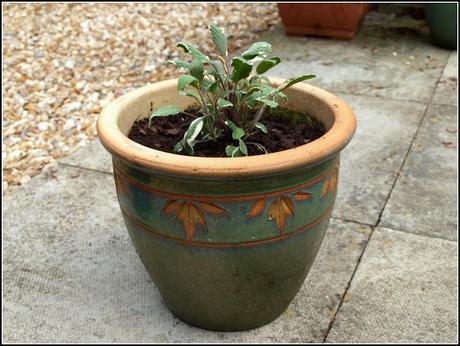
Or this one which was chosen for its color and motif, to match the fern I planted in it.
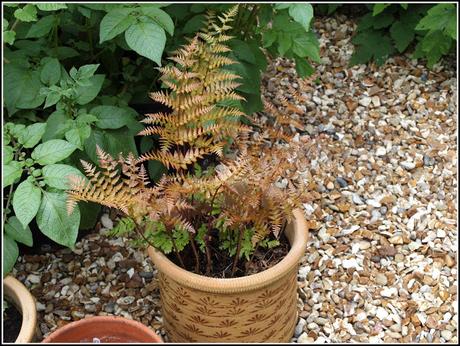
When you have plants in pots you can move them around at will. I do this often. I try to put the best-looking plants in the most prominent position. When they have faded they can be moved elsewhere so that something else can take a turn. For instance, every year I have pots of Daffodils and Tulips right outside the glass doors of the Living Room, where we can admire them, but when the flowers finish, the pots are moved round to the side of the house, out of sight, while their by-now unsightly foliage dies down.
At any given moment, there are pots of cuttings and seedlings scattered all around the garden. Cuttings are often concealed in shady corners so that they don't get stressed by too much direct sunshine before they get established (as if!). Likewise, young plants that have been recently potted-up, or divided and re-potted, get the same treatment. These are cuttings from the Pelargonium I bought at Dipley Mill the other day. By the way, I think I have identified this variety as "Grey Lady Plymouth".
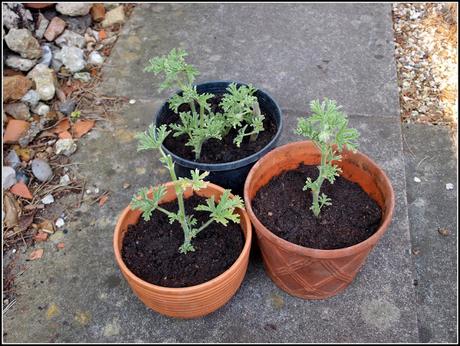
The main plant, from which I took these cuttings, went into a tall elegantly tapered terracotta pot (to match the plant). It's one that is already naturally "aged":

Most of the plants I raise from seed start their lives in a pot or module of some sort.
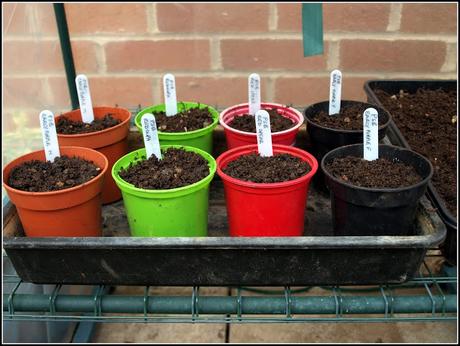
Some never get any further than that, like these, destined to be used as salad ingredients at a young and tender stage:
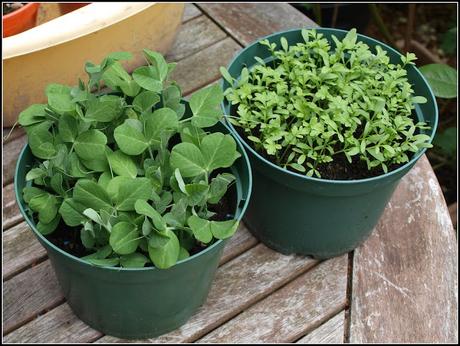
Salad ingredients- Peashoots and Greek Cress
Some of course are only in their pots for a brief period before being planted out.
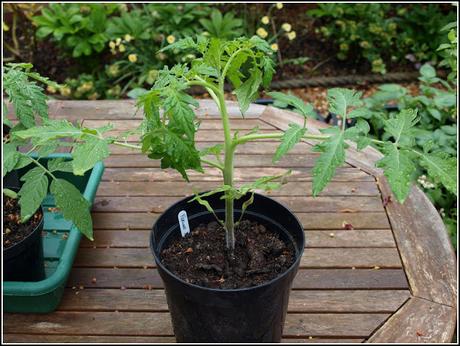
Young Tomato plant
By the way, not ALL pots are easily re-located:
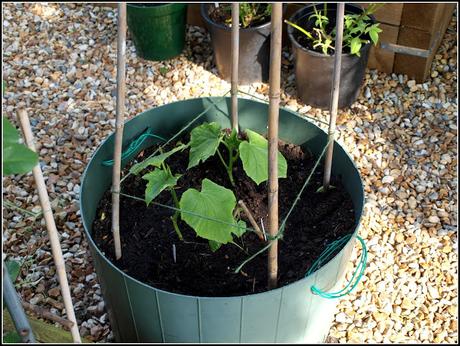
It needs at least two strong people to shift this container!
You will have gathered then that I like pots. But pots have some disadvantages too. Since they usually contain only a limited amount of soil or compost (preferably compost, because soil dries out too quickly and often becomes very compacted), moisture retention is an issue. If you are not prepared to check the moisture levels in your pots frequently, and also add water to them frequently if needed, you would be well advised not to use them. Even the so-called "self-watering" pots will only keep your plants hydrated for a few days. I check my pots at least twice a day when I'm at home - in fact I'm probably sub-consciously doing it all the time when I'm in the garden. You might think that relying on rainfall is sufficient, but it's not. Very often the leaves of a plant divert the rain a fair way away from its roots. That's OK if the plant is in soil, because the roots will spread out in search of the water, but if it's in a pot the rain-water may fall outside the pot and thus be unavailable.
Sometimes I stand my pots in saucers. The reason for this is that all too often when you are watering - particularly if you have allowed a pot to dry out too much - the water runs through the compost and straight out at the bottom. The saucer collects this run-off and the plant will be able to slowly absorb it in the hours that follow.
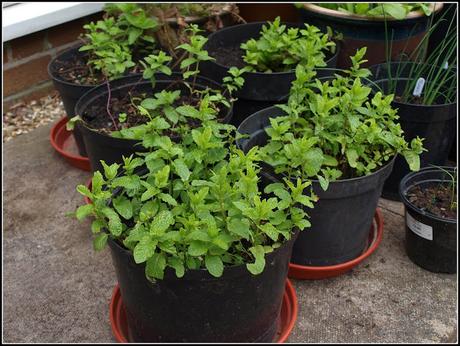
If you haven't got purpose-made pot-saucers, you can always improvise with seed-trays!
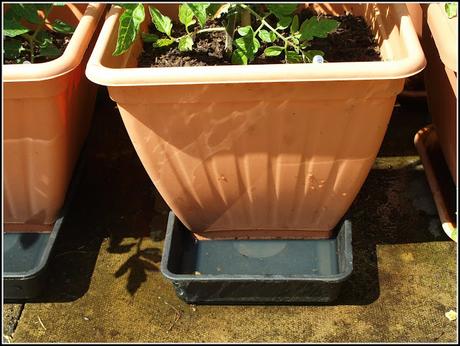
Of course, when the weather turns bad, you have to remember to remove the pot-saucers, otherwise the plant may get waterlogged!
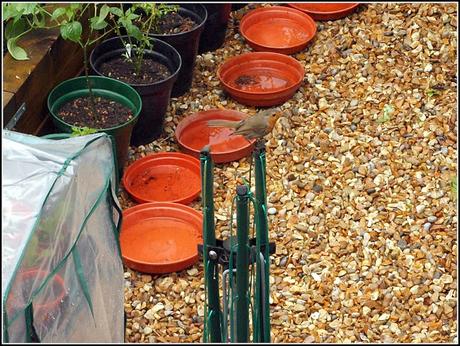
The final point I would like to make today is this: plants do, to an extent, adjust their size to the size of their container. Give a plant a big pot, filled with decent compost, and it will usually grow bigger than if it were to be in a small pot. Perhaps one of the reasons for this is the lack of competition from neighbouring plants. It's certainly something to consider when making your choices of plants and pots.
